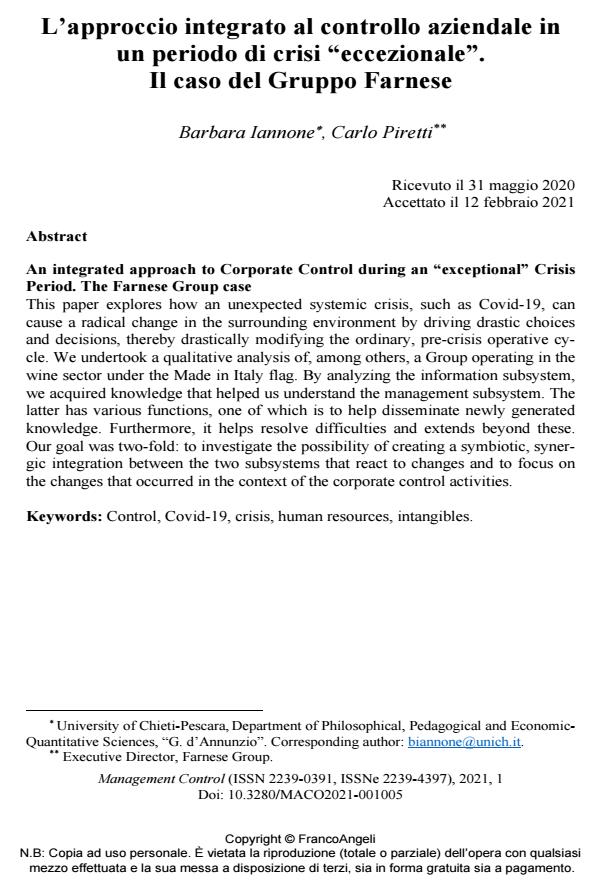An integrated approach to Corporate Control during an "exceptional" Crisis Period. The Farnese Group case
Journal title MANAGEMENT CONTROL
Author/s Barbara Iannone, Carlo Piretti
Publishing Year 2021 Issue 2021/1
Language Italian Pages 24 P. 81-104 File size 384 KB
DOI 10.3280/MACO2021-001005
DOI is like a bar code for intellectual property: to have more infomation
click here
Below, you can see the article first page
If you want to buy this article in PDF format, you can do it, following the instructions to buy download credits

FrancoAngeli is member of Publishers International Linking Association, Inc (PILA), a not-for-profit association which run the CrossRef service enabling links to and from online scholarly content.
This paper explores how an unexpected systemic crisis, such as Covid-19, can cause a radical change in the surrounding environment by driving drastic choices and decisions, thereby drastically modifying the ordinary, pre-crisis operative cycle. We undertook a qualitative analysis of, among others, a Group operating in the wine sector under the Made in Italy flag. By analyzing the information subsys-tem, we acquired knowledge that helped us understand the management subsys-tem. The latter has various functions, one of which is to help disseminate newly generated knowledge. Furthermore, it helps resolve difficulties and extends beyond these. Our goal was two-fold: to investigate the possibility of creating a symbiotic, synergic integration between the two subsystems that react to changes and to focus on the changes that occurred in the context of the corporate control activities.
Keywords: Control, Covid-19, crisis, human resources, intangibles
- Pandemia e sistema di budgeting: quali effetti sulla figura del controller? Ilenia Ascani, Marco Gatti, Maria Serena Chiucchi, in MANAGEMENT CONTROL 3/2021 pp.65
DOI: 10.3280/MACO2021-003004
Barbara Iannone, Carlo Piretti, L’approccio integrato al controllo aziendale in un periodo di crisi "eccezionale". Il caso del Gruppo Farnese in "MANAGEMENT CONTROL" 1/2021, pp 81-104, DOI: 10.3280/MACO2021-001005